Vehicle damage assessment using computer vision is an active research and development area. The goal is to use computer algorithms to automatically detect and analyze vehicle damage from images or videos.
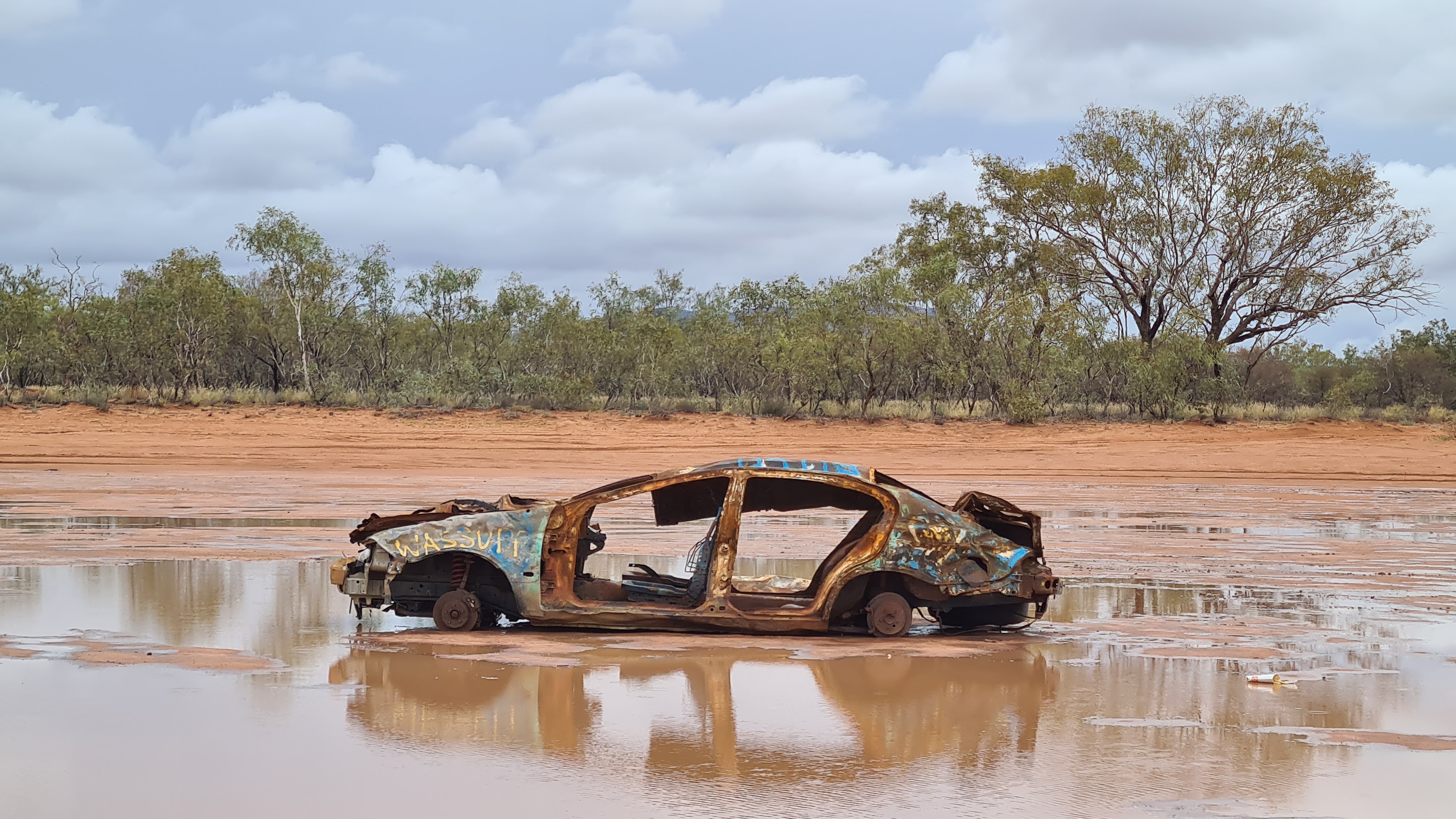
The process typically involves the following steps:
1. Image or video capture: Images or videos of the vehicle are captured from various angles using cameras or other sensors.
2. Preprocessing: The captured images or videos are processed to improve their quality and remove noise.
3. Object detection: The vehicle and its parts are detected and segmented from the background.
4. Damage detection: The detected parts are analyzed to detect any signs of damage, such as dents, scratches, or cracks.
5. Severity estimation: The severity of the damage is estimated based on factors such as the size, shape, and location of the damage.
6. Reporting: The results of the analysis are reported to the relevant stakeholders, such as insurance companies, repair shops, or vehicle owners.
Computer vision techniques such as object detection, segmentation, and machine learning algorithms like convolutional neural networks (CNNs) can be used to automate this process. These techniques have the potential to improve the accuracy and speed of vehicle damage assessment and reduce human error.
Vehicle damage image classification using no-code platforms is becoming increasingly popular. These platforms enable users with little to no coding experience to develop and deploy machine learning models for various applications, including a vehicle damage assessment. Here's an overview of the steps involved in using the navan.ai no-code platform for vehicle damage image classification.
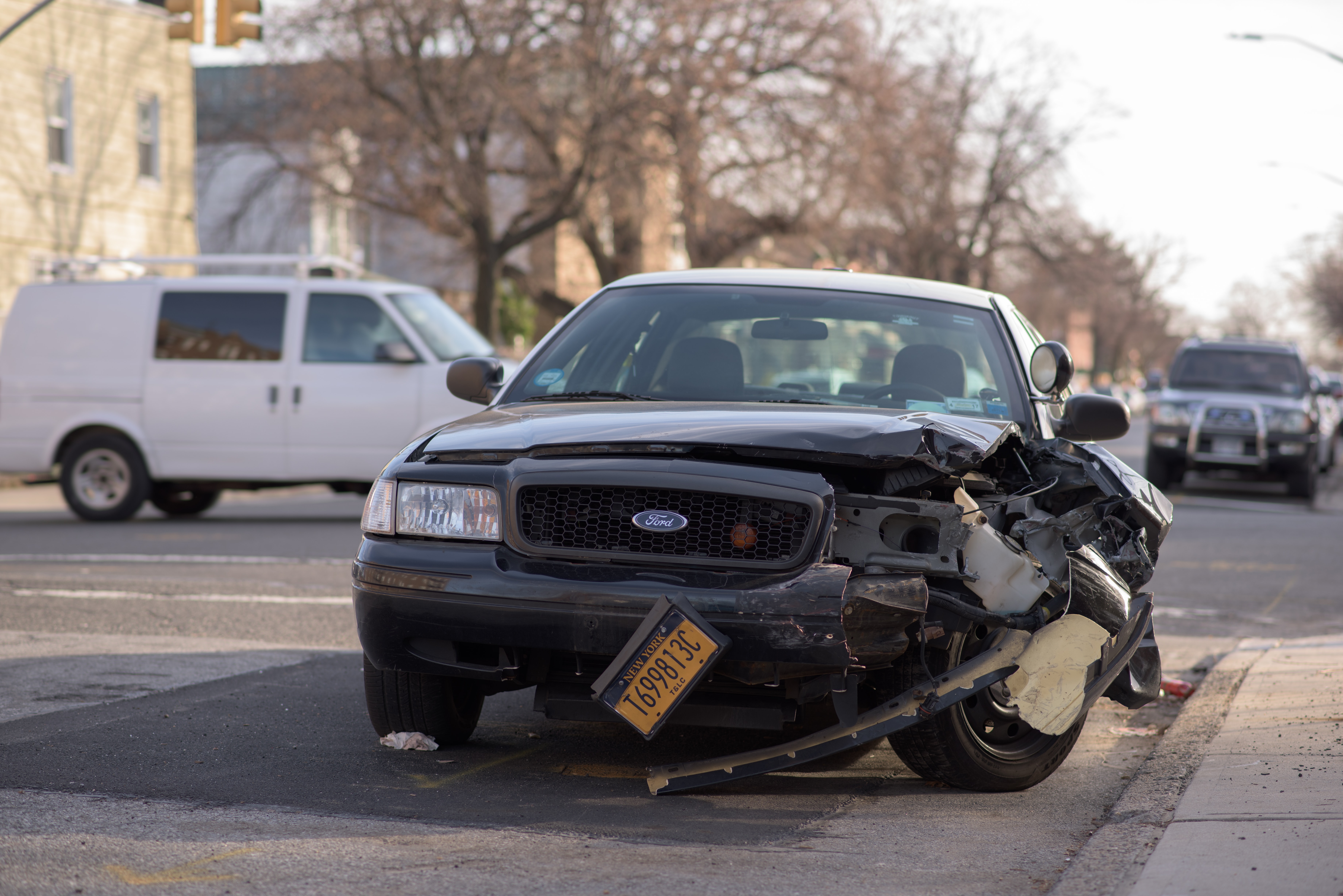
Use case:
One potential use case for vehicle damage image classification using no-code platforms is in the insurance industry. Insurance companies are often required to assess the extent of damage to a vehicle after an accident to determine the amount of compensation to be provided to the vehicle owner. Traditional methods of assessing damage involve manual inspection of the vehicle by an expert, which can be time-consuming and subjective.
Using a no-code platform, insurance companies can develop a machine learning model to automatically classify images of damaged and undamaged vehicles. This model can then be used to quickly and accurately assess the extent of damage to a vehicle after an accident. This would reduce the time taken to process claims, improve accuracy, and reduce costs for both the insurance company and the vehicle owner.
The process would involve collecting a large dataset of images of vehicles with and without damage, labeling the images to indicate whether the vehicle has damage or not, training a machine learning model on the labeled data using a no-code platform, and deploying the model in a production environment. Once the model is deployed, the insurance company can use it to classify new images of damaged and undamaged vehicles to assess the extent of the damage.
Case study:
One example of vehicle damage classification is a case study from Tractable.
Tractable's vehicle damage classification is an artificial intelligence company that uses computer vision and machine learning to assess vehicle damage.
Tractable has developed a sophisticated machine learning model that can accurately classify images of vehicle damage into various categories such as dents, scratches, and fractures. This model has been trained on a large dataset of annotated images, which allows it to learn the patterns and features associated with each type of damage
Overall, Tractable's vehicle damage classification system is a great example of how AI and computer vision can be used to automate complex tasks and improve the efficiency of the automotive industry.
How navan.ai can help you build a Damaged vehicle classification model without having to write a single line of code?
1. Visit nstudio.navan.ai, and sign up using your Gmail id.
2. Choose a suitable model architecture:
- EfficientNet-B4 is the fourth model in the EfficientNet family and has approximately 19 million parameters. It is computationally efficient and can be trained on a single GPU, making it an attractive choice for many applications that require high accuracy with limited computational resources.
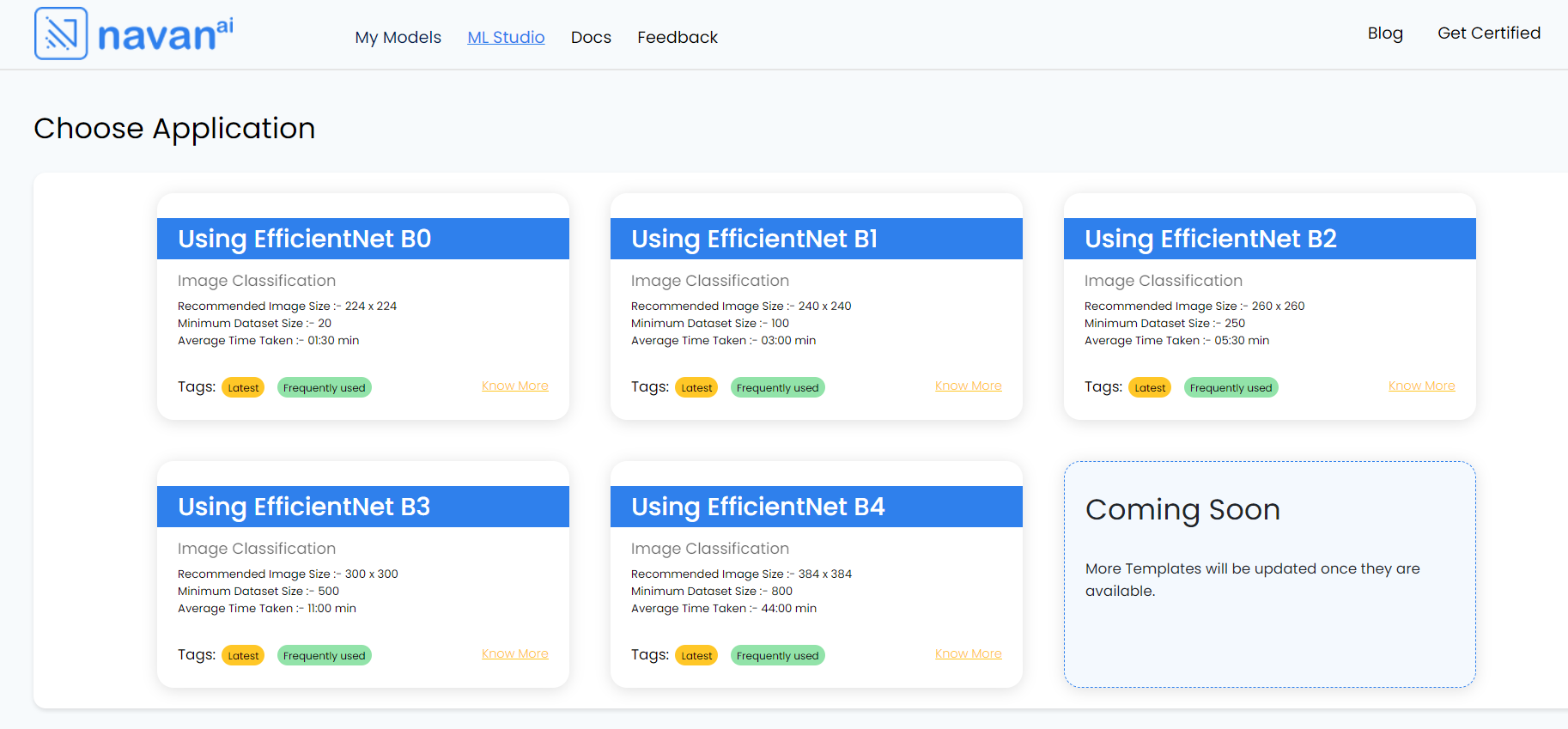
- Train the model by selecting an Efficient B4 application to build a model on Vehicle damage classification.
3. Training the model: we have named the Model “DAMAGED VEHICLE CLASSIFICATION”. We are considering 2 classes here
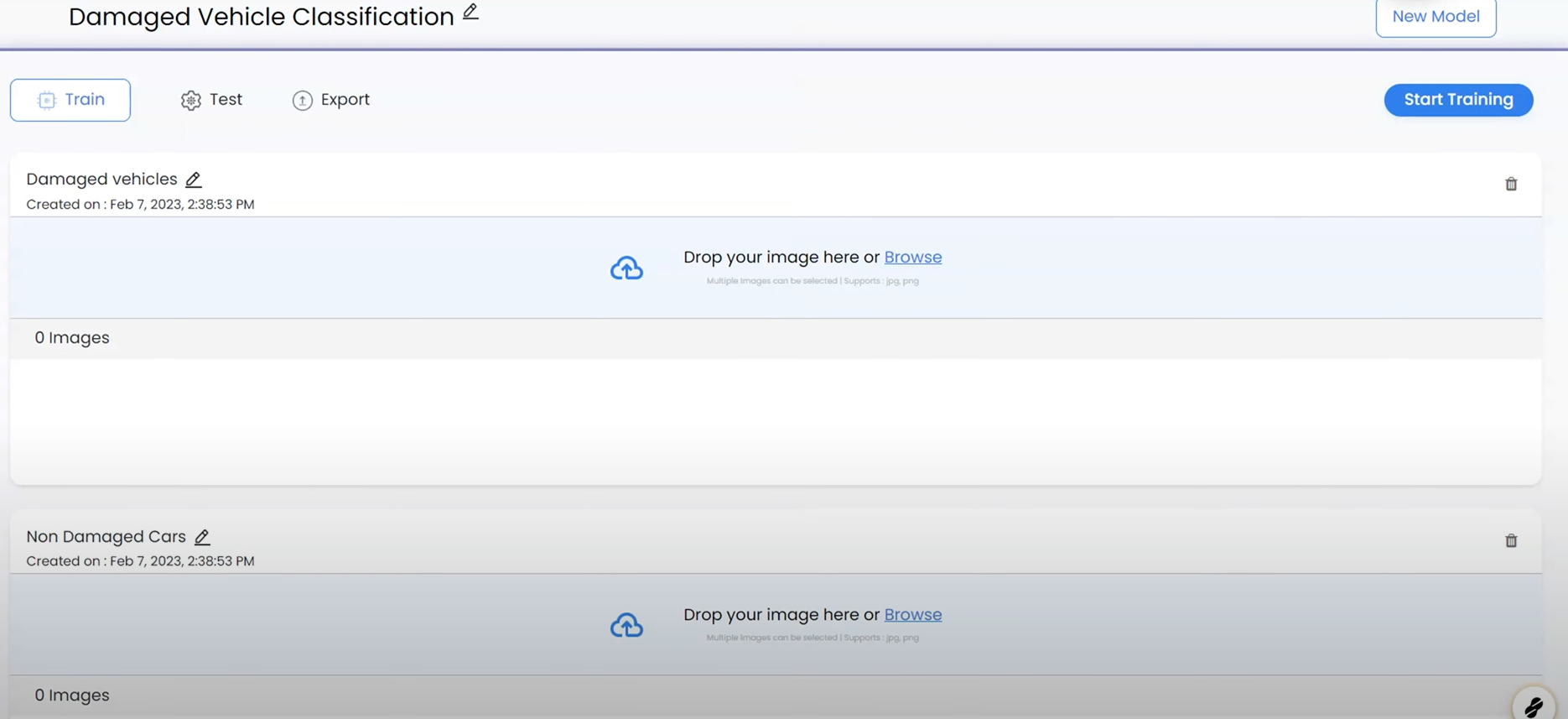
4. The images are uploaded to Class 1 [Damaged Vehicles]

5. The images are uploaded to Class 2 [Non-Damaged Cars]

The next step is to click on the start training button so that the model can be trained.
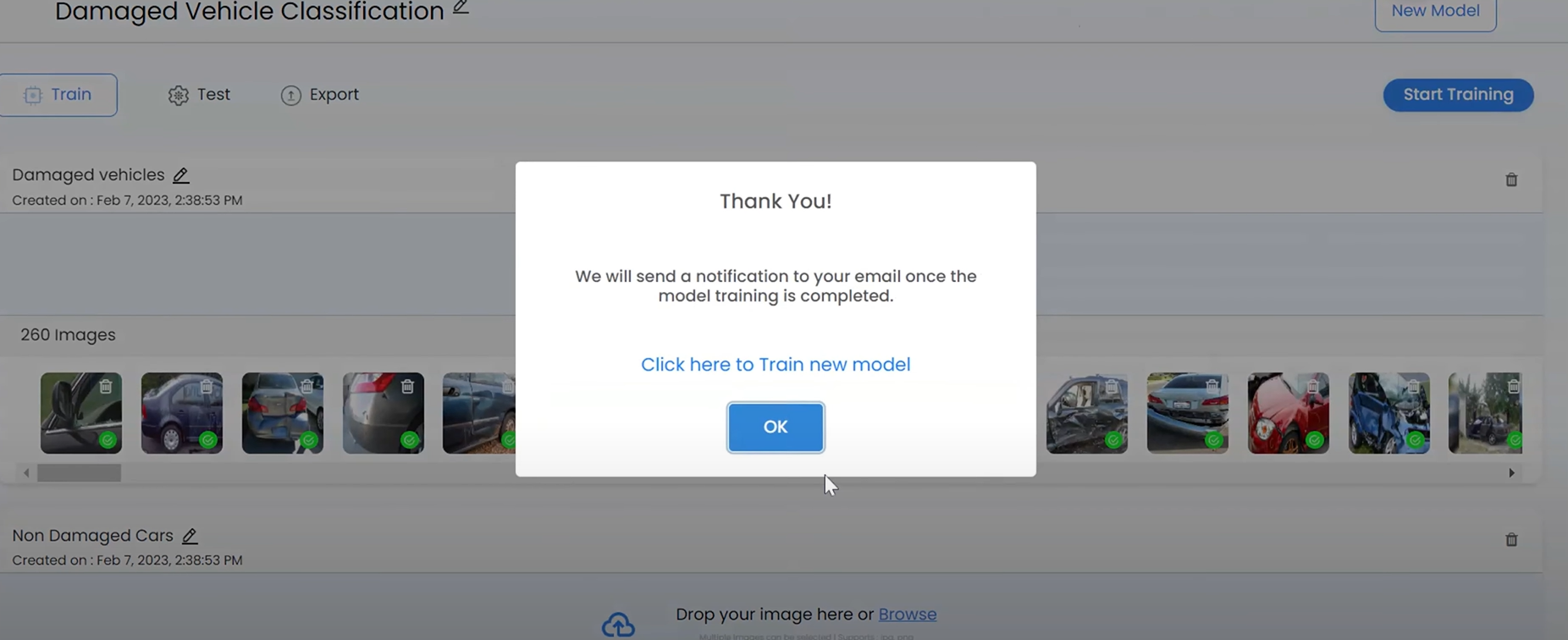
6. Testing the model: Once the DAMAGED VEHICLE CLASSIFICATION model has been trained, the next step is to test the model to see if it is performing according to our expectations. It can be evaluated using a separate test dataset to determine its performance and make any necessary adjustments before deploying it in a real-world application.
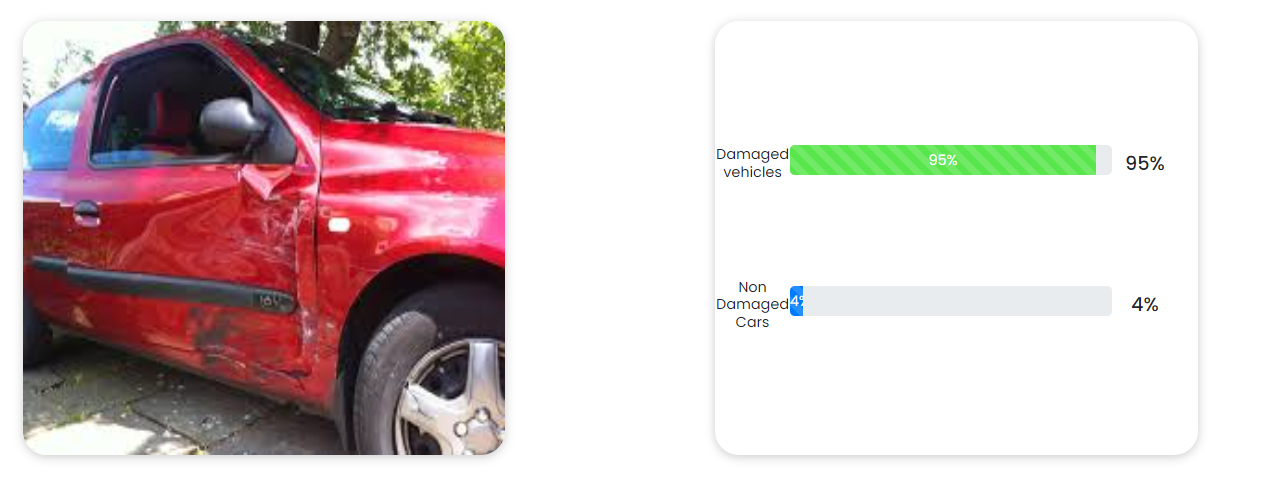
7. Deploying the model: The easiest way to deploy the computer vision model is by using the list of export models on navan.ai. We have 3 options: Deploy a model using Model files, Deploy a model through Docker, and lastly deploy the model as API. You can integrate the model with your application to get a scalable use case and build using your data without any coding on navan.ai.
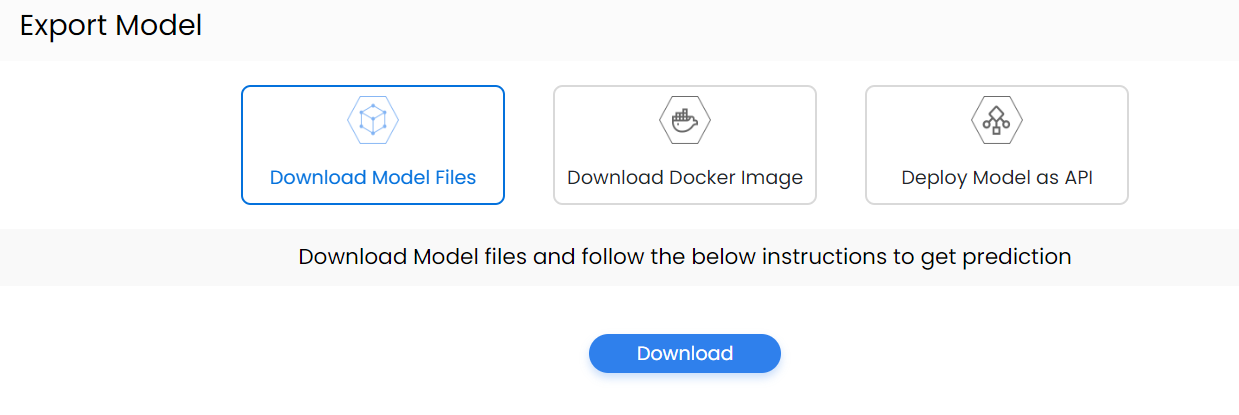
Here’s a video showing how you can build a Vehicle damage Computer Vision AI Model on navan.ai:
navan.ai is a no-code computer vision platform that helps developers to build and deploy their computer vision models in minutes. Why invest 2 weeks in building a model from scratch when you can use navan.ai and save 85% of your time and cost in building and deploying a computer vision model? Build your models, share knowledge with the community, and help us make computer vision accessible to all. navan.ai also helps organizations with MLOps by setting up CT, CI, and CD pipelines for ML applications.
Visit navan.ai and get started with your computer vision model development NOW!
